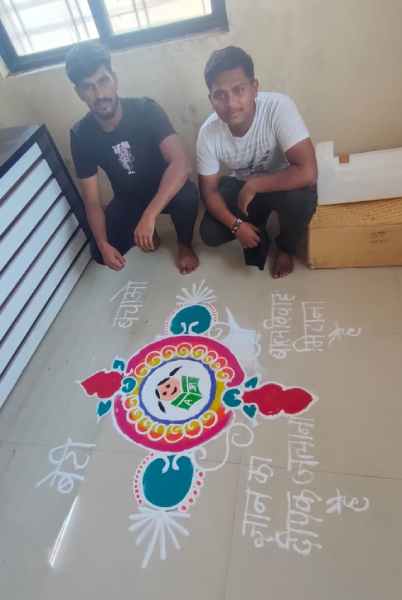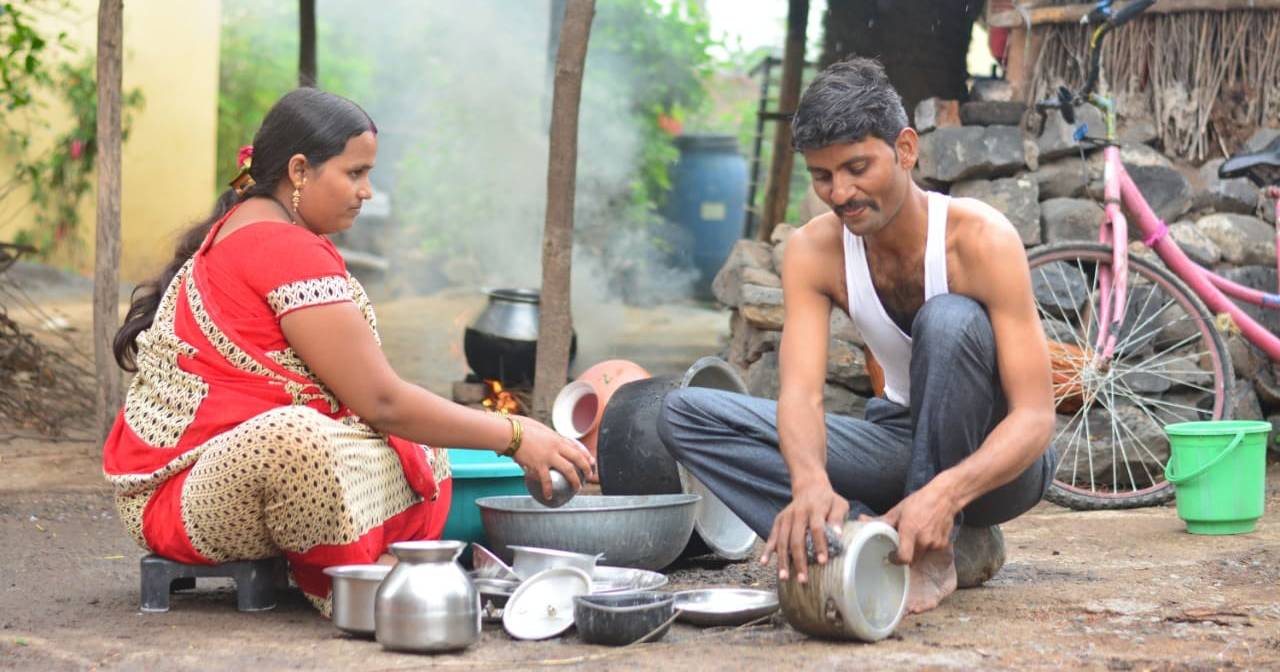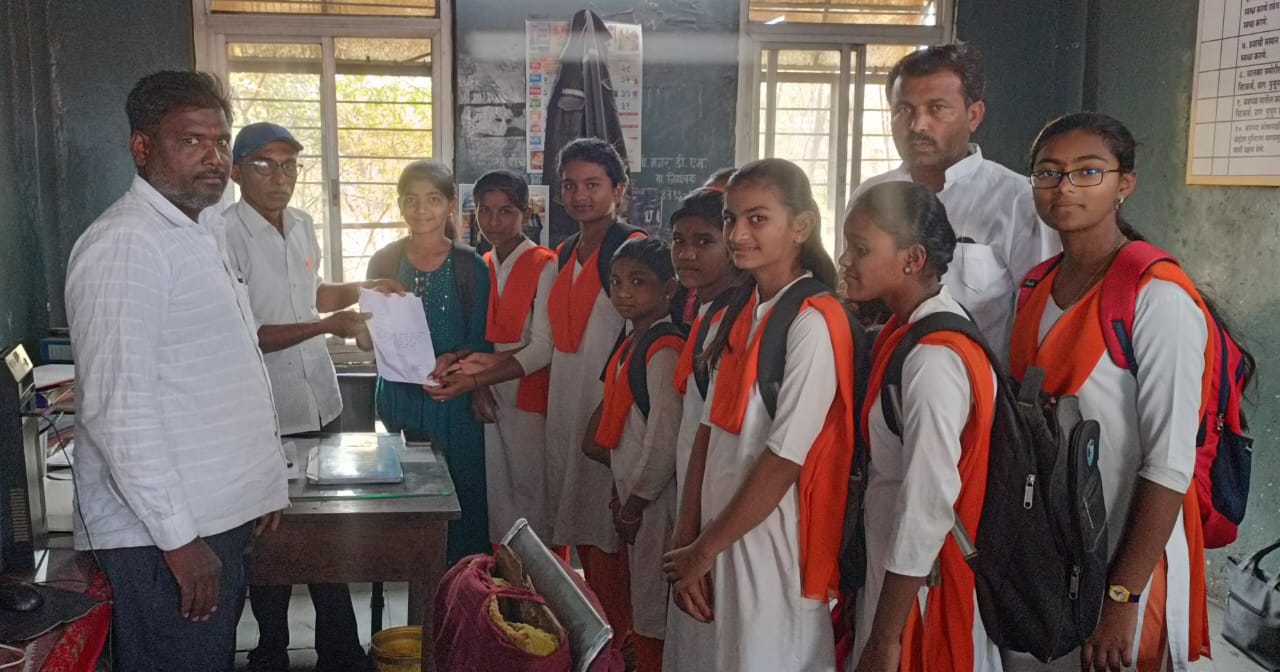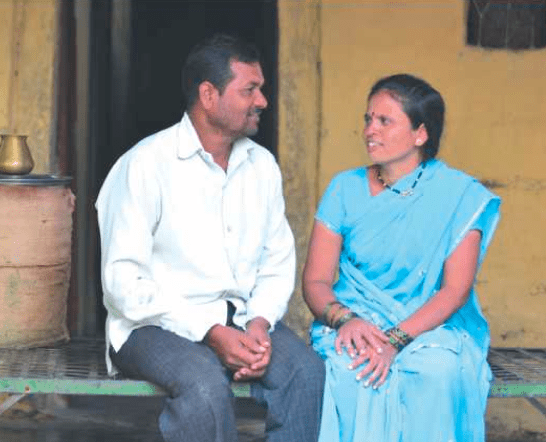Overview
The Samajdaar Jodidaar (in Marathi for ‘Responsible Partnership’) Project was a unique effort to mobilize men for gender justice in a patriarchal society like ours. It sought to transform the patriarchal attitudes, values and behaviour of men enabling them to become allies in women‘s empowerment. It was observed that many men cared about the well-being of girls and women and opposed violence against women, but often did not know how to act on these concerns. This was seen as an opportunity to promote changes in men and facilitate processes of sensitisation, to enable them to deconstruct the harmful masculine identities that patriarchy has imposed upon them and which lead to women‘s subjugation.
The approach:
The approach to mobilising men for gender justice was two pronged:
Personal Transformation: Facilitating processes that impact men’s relationships and family dynamics. This involved challenging and deconstructing harmful masculine identities imposed by patriarchy.
Community and Institutional Change: Engaging men as change agents to foster gender equality in the community, its institutions and state-run services.
The strategy :
- Develop a cadre of male community volunteers, referred to as ‘animators’ who would themselves adopt gender-equitable practices in their personal lives and also act as ambassadors of gender equality and women’s empowerment.
- Train them to facilitate discussions, organize events, and advocate for gender equality within their communities.
HMF anticipated project sustainability through animators forging an organic link between their personal lives and their project responsibilities.
The implementation site:
The area in the Akkalkot block of the Solapur district
1. that had no influence of HMF activities
2. that had lack of NGO presence
3. neglected area on the Maharashtra-Karnataka State border
20 villages
1. within the Public Health Centre jurisdictions of Shirwal and Chapalgaon
2. had an NRHM (National Rural Health Mission) network.
Total population in these villages: 43,200
The methodology/activities:
- Team Appointment: A team of two ‘facilitators’ (one woman, one man) and an experienced ‘mentor’ led the project.
- Community Consultation: Consultations with opinion leaders, village Dispute Resolution Committees, and governance bodies (gram panchayat).
- Recruitment of Animators :
- Publicized recruitment openings in the villages.
- Conducted interviews with interested young men.
- Selected 20 of those (1from each village) with an aptitude and willingness to promote gender equality.
- Training sessions for animators
Step 1:
Introspection to deconstruct notions of masculinity
Step 2:
Personal change in one’s own attitudes and behaviour.
Step 3:
Development of gender-equitable knowledge and practices
Step 4:
Skills to mobilize village youth and men and conduct activities to promote gender-equal attitudes and behaviours.
Activities Conducted by Animators

- Group Formation and Gender Sensitization: Mobilised men and formed groups of married and unmarried men for gender-sensitization.
- Campaigns: against early marriage of girls and domestic violence, and promoting girls’ education, women’s health and participation of women in village governance, etc.
- Awareness initiatives: Gender awareness during village-level cultural events, and competitions for men on tasks typically done by women (e.g. Rangoli competition).
- Training programmes: For newly married couples as well as the male animators and their spouses on harmonious intimate relationships.
- Property Rights promotion: Encouraged inclusion of the wife’s name in the family’s property (joint ownership) and other resources.
Testimony
Prof. Vilas Bet, the mentor:
“It was emphasised that village development was very important, but even before that change in personal attitudes and behaviour was important in order to bring about village development. When animators understand this and begin to speak to the villagers, they will be able to speak with confidence. The villagers will also understand that the animators practice what they preach; only then will they feel inclined to listen to them.”
An evaluation was conducted at the end of the project that brought out several challenges as lessons to be learnt for HMF useful for replication.
Outcomes
A formal project evaluation showed the following results:
Achievements:
• Personal Changes in Animators:
- Participated in domestic work (sweeping, cleaning the house and surroundings, cooking).
- Began taking care of women’s health needs, engaging in consensual sex, and showing sensitivity towards their partner’s sexual needs.
- Participated in child care; encouraged the education of their sisters or girl children.
- Quit alcohol or substance abuse.
- Stood up against their parents’ decision about getting their sisters married early, and tried reasoning out with them to continue her education.

Participated in domestic work (sweeping, cleaning the house and surroundings, cooking).

Secured government bus services for girls’ education in 3 villages.
- Community Recognition and Leadership: Animators earned recognition in their villages, with some being selected as members of Village Dispute Resolution Committees and other local bodies.
- Property Rights of women: Secured joint ownership of family houses in 1,752 families.
- Mobilized community Support for Girls and their Rights:
- Celebrated the birth of girl children.
- Secured government bus services for girls’ education in 3 villages.
- Measures to combat Domestic Violence:
- Influenced panchayats to address domestic violence, leading villagers to take a public oath against it.
- Established ‘violence-free committees’ in 5 villages.
- Alcohol Prohibition: Campaigned to ban alcohol sales in villages.
- Women’s Participation in Governance:
- Raised issues related to village governance, advocating for women’s participation in gramsabhas and public matters like water sanitation, budgets, and accounts:
- o 5 out of 20 villages started holding women-only gramsabhas.
- Increased participation of women representatives in the
- Family Planning and Health:
- In 2 villages, couples took a public oath to use family planning methods.
- 738 women from 20 villages began participating in family decisions.
- Men increasingly took responsibility for women’s reproductive health in their families.
- Established a strong relationship with the NRHM network, thus improving PHC services as envisioned by NRHM.
Challenges and lessons learnt:
- Animator turnover: Due to resistance from villagers and the lack of conviction about the cause.
- Training Participation: Time constraints for three-day training programs as they had their own occupations, such as farming or small enterprises.
- Flexible Training Approach: Tailored schedules to animators’ availability.
- Mentor involvement: Extensive time and effort required to establish the project.
- Reluctance to Share Property: Many animators were not convinced about sharing property with their sisters.
- Marriage Choices: Contentious views on sisters’ rights to choose their own partners, especially if from a different caste.
- Social Ridicule:
- Those demonstrating changes faced ridicule from friends and villagers.
- Support from a minority that appreciated these efforts helped expand the number of gender equality advocates.
- Time for Attitudinal Change: Significant time needed for animators to fully embrace gender equality, alter their perspectives and behaviour accordingly.
- Overall Slow Progress: The journey towards gender equality is slow, challenging, and tedious.
Using the experiences and lessons learnt from the Samajdaar Jodidar Project, during the years 2014 and 2018, work with men continued in the 40 project villages in the Tuljapur and Lohara Blocks in the Dharashiv District within HMF’s Women Empowerment Initiative’s Phase four and Phase five.
Financial partner:
UNFPA provided the necessary funds for the project through Centre for Health and Social Justice (CSHJ), New Delhi that partnered with HMF for project implementation.
